Motorola Droid Bionic Review - Dual Core with 4G LTE
by Brian Klug on October 11, 2011 1:55 AM EST- Posted in
- Smartphones
- LTE
- Motorola
- OMAP 4
- Mobile
- motorola droid bionic
Software and Performance
The Bionic comes with Motorola’s new Motoblur, just like I saw on the Droid 3. You can go pull the specific version from build.prop:
Blur_Version.5.5.886.XT875.Verizon.en.US
It includes a custom lock screen which gets some different styling and a slide left-right unlock scheme. The theme also includes an CRT off animation, which seems to be an approximation of the off animation from Android 2.3. The Bionic as we reviewed it was running Android 2.3.4, which is new but not absolute bleeding edge.
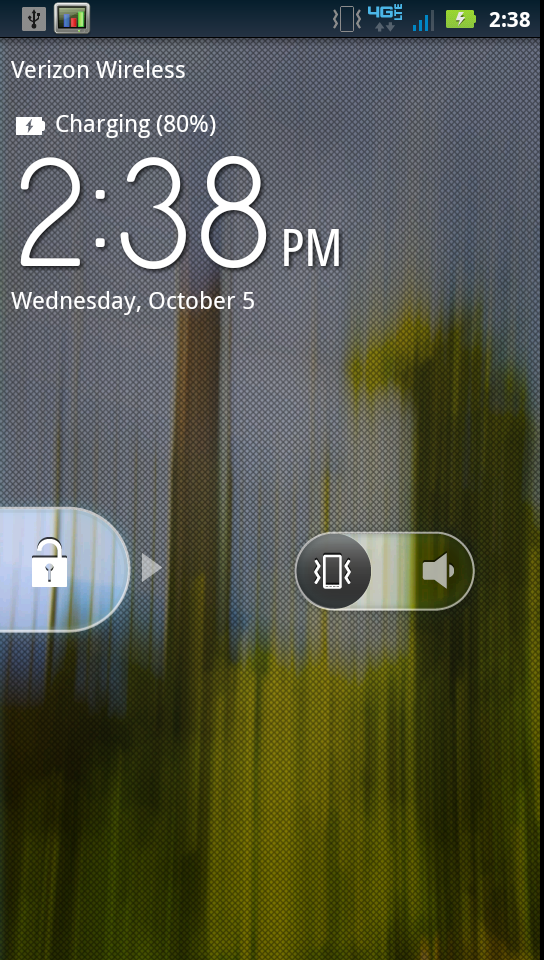

All the usual Motoblur accoutrements are here, including a black on grey theme for settings and menus, and blue elsewhere for the shade and highlighting colors.

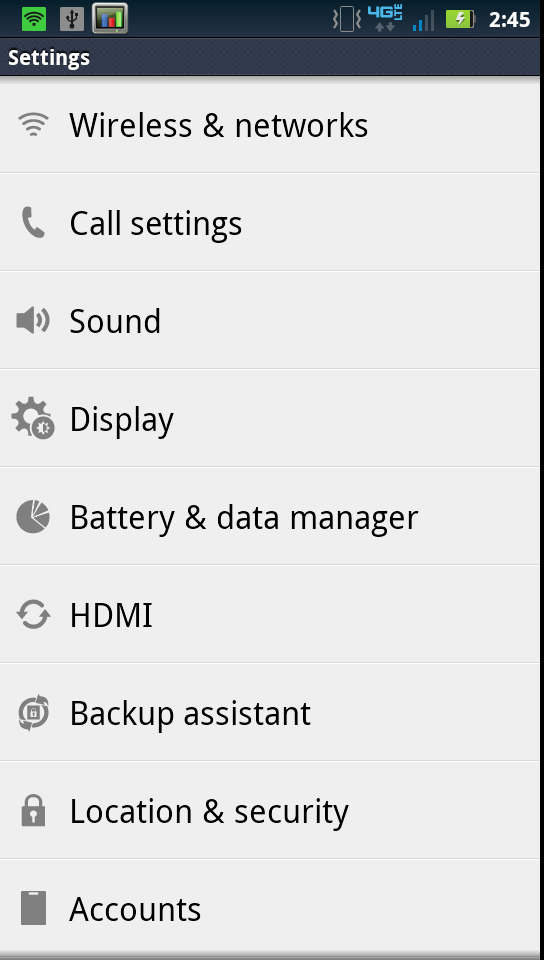
The home screens get the same kind of 3D composition I saw on the Droid 3, and feel pretty smooth panning back and forth. The only thing I’ve noticed this time is that it looks like the color depth here on the background seems to be 16 bit (RGB 565). I bet this is due to some GPU composition going on which makes things nice and speedy.
Pretty much the same applies to the launcher, where you get a paginated 4x5 grid of icons that can be sorted alphabetically or grouped. The Bionic does come with an assortment of preloaded stuff that’s entirely par for Verizon. Some things can be removed without root, other things can’t. I feel like we’re getting closer to the point where users are given the ability to uninstall stuff without root, but it still isn’t here yet.
Going over the storage situation on the Droid 3 is also important. By default, you get 16 GB of internal NAND, and a 16 GB class 4 microSD card. Things look like this using df:
Filesystem Size Used Free Blksize/dev 465M 388K 465M 4096/mnt/asec 465M 0K 465M 4096/mnt/obb 465M 0K 465M 4096/system 477M 332M 144M 1024/data 3G 501M 3G 4096/cache 708M 18M 689M 4096/osh 1G 650M 661M 2048/pds 3M 1M 2M 1024/preinstall 302M 187M 115M 1024/mnt/sdcard-ext 14G 11M 14G 32768/mnt/sdcard-ext 14G 11M 14G 32768/mnt/sdcard 8G 227M 7G 8192/mnt/sdcard 8G 227M 7G 8192
I’m not going to go over all of the OMAP 4430 details again since we’ve already gone in depth with the Motorola Droid 3, so I’d encourage curious minds to check that out for more detail. The short of it is that the Droid Bionic has a 1.0 GHz OMAP4430 SoC which consists of two ARM Cortex A9s with the MPE (ARM’s NEON SIMD unit), alongside PowerVR SGX 540 graphics at 304 MHz and a dual channel LPDDR2 memory interface. The Bionic has 1 GB of LPDDR2 over the Droid 3’s 512 MB of LPDDR2, but this is primarily to accommodate the increased demands from the laptop dock.
First up are the web based tests. Interestingly enough the Bionic posts an impressive result for SunSpider 0.9, I ran this test a few times as always and this wasn’t an errata. I also updated the SGS2 results with a run from the newest firmware I see on Kies, XXKI1, which is 2.3.4.
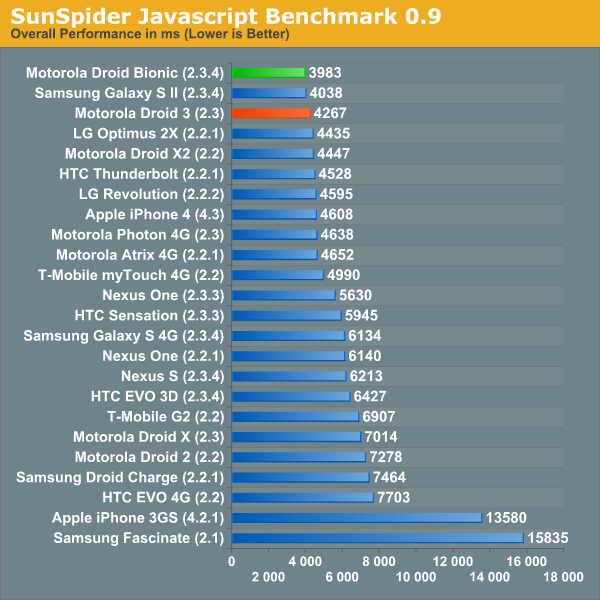
Browsermark curiously is a bit lower compared to the Droid 3 however, which is surprising since the two should be close considering the same SoC and version of Android. The results are reasonably close, however.
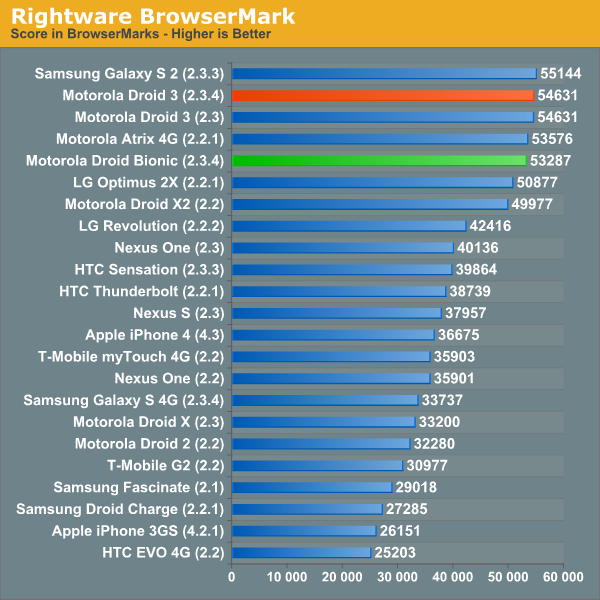
I didn’t record the Vellamo ocean flinger result from the Droid 3, however the Bionic comes in just above the Galaxy S 4G. Motorola isn’t using a backing store, rather something of a re-skinned stock Android browser, and thus scrolling performance isn’t as fluid as other devices.
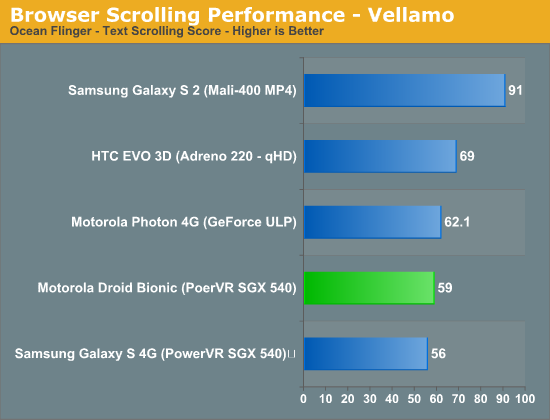
Flash is a bit interesting - there was an update for Flash 10.3 on Android pushed out a while back that enabled NEON codepaths for OMAP4 based phones. I didn’t have the Droid 3 at the time, but the Bionic now shows an improvement and is much closer to the cap for most of the test.

The rest of the tests are essentially the same as what we posted in the Droid Bionic preview piece, and reflect what we’ve seen before from OMAP4430.
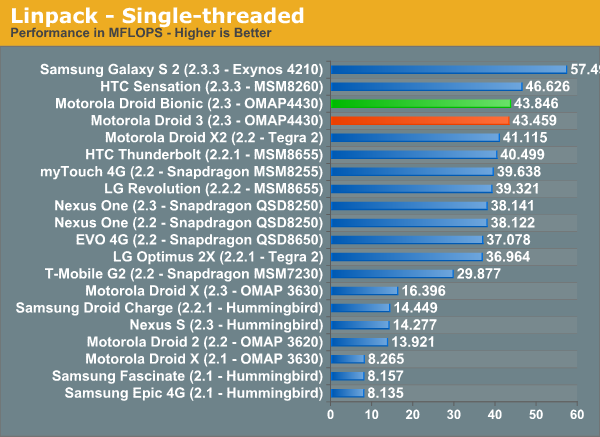
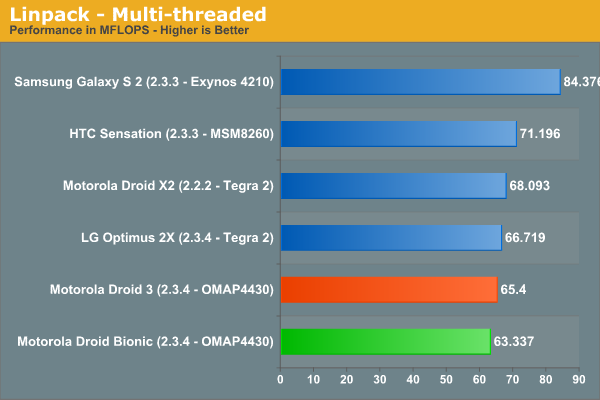
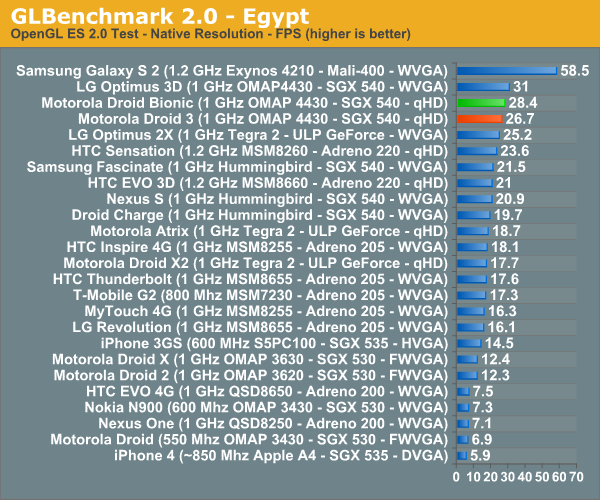
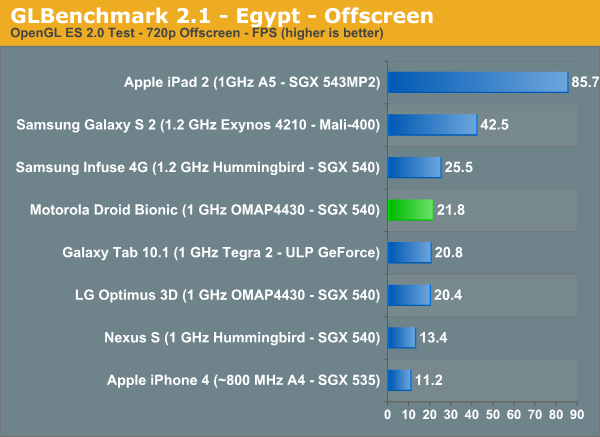
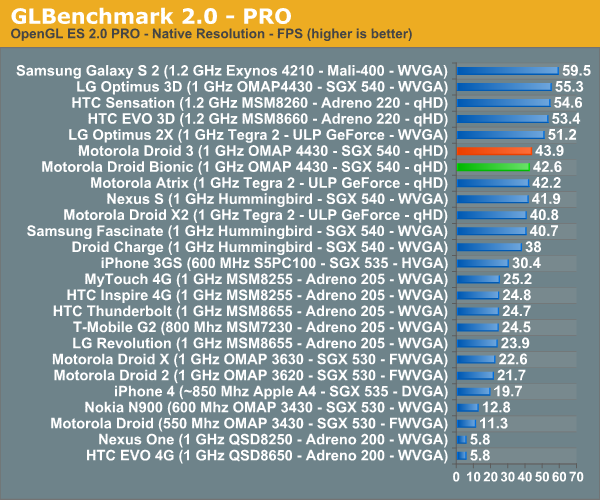
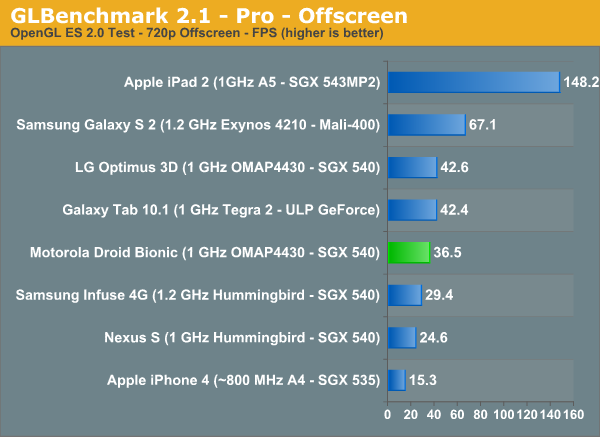
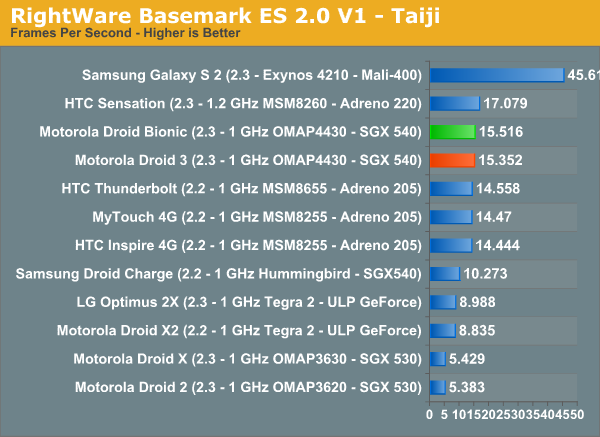
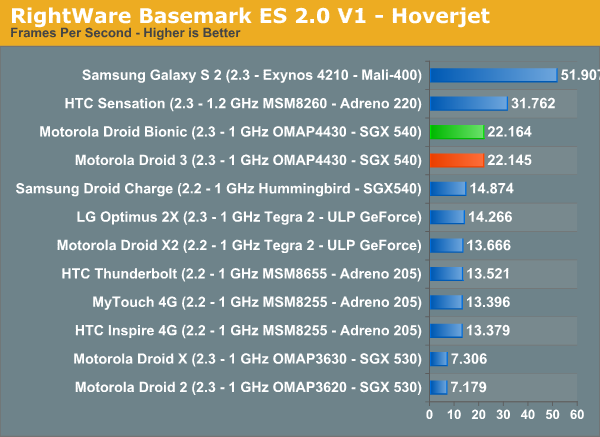
The results are unsurprising and completely in line with where they should be. The Bionic isn’t the absolute fastest of the dual core smartphones we’ve seen before, but it’s the first with LTE alongside it. The other question is how fast pages load on LTE compared to EVDO, I shot some video in our video review which really communicates things nicely.










64 Comments
View All Comments
wpwoodjr - Wednesday, October 12, 2011 - link
That would be really cool, thanks!vol7ron - Wednesday, October 12, 2011 - link
1) It would be nice to see the SpeedTest in CDMA/3G EVO (since you did the browser side-by-sides)2) It would be nice if you added a counter in addition to saying done
3) Is that a placemat in the background? I think I have the same set from Target :)
crankerchick - Friday, October 14, 2011 - link
Thanks for the thorough review. It's wonderful to have more in-depth looks at device performance and comparisons to the competition.While I don't think the Bionic is the next phone for me, it's good to see where things have progressed to. With the impending release of the HTC device (Rezound?) and Samsung with ICS (Nexus Prime/Galaxy Nexus??), I'm placing my bets on one of those for me. Who knows, maybe even an iPhone 4S is in my future. Motorola continues to disappoint the tech crowd with their locked bootloaders, but otherwise have pretty impressive device offerings, the Bionic no exception.
LTE Fever - Sunday, November 20, 2011 - link
The HTC Rezound is giving me very bad trouble with the hotspot and staying connected to LTE.On my Bionic however I was able to hit 52 down and 14 up in Birmingham, AL which would bring it over the UE Cat 2 specs
http://www.speedtest.net/android/94284031.png